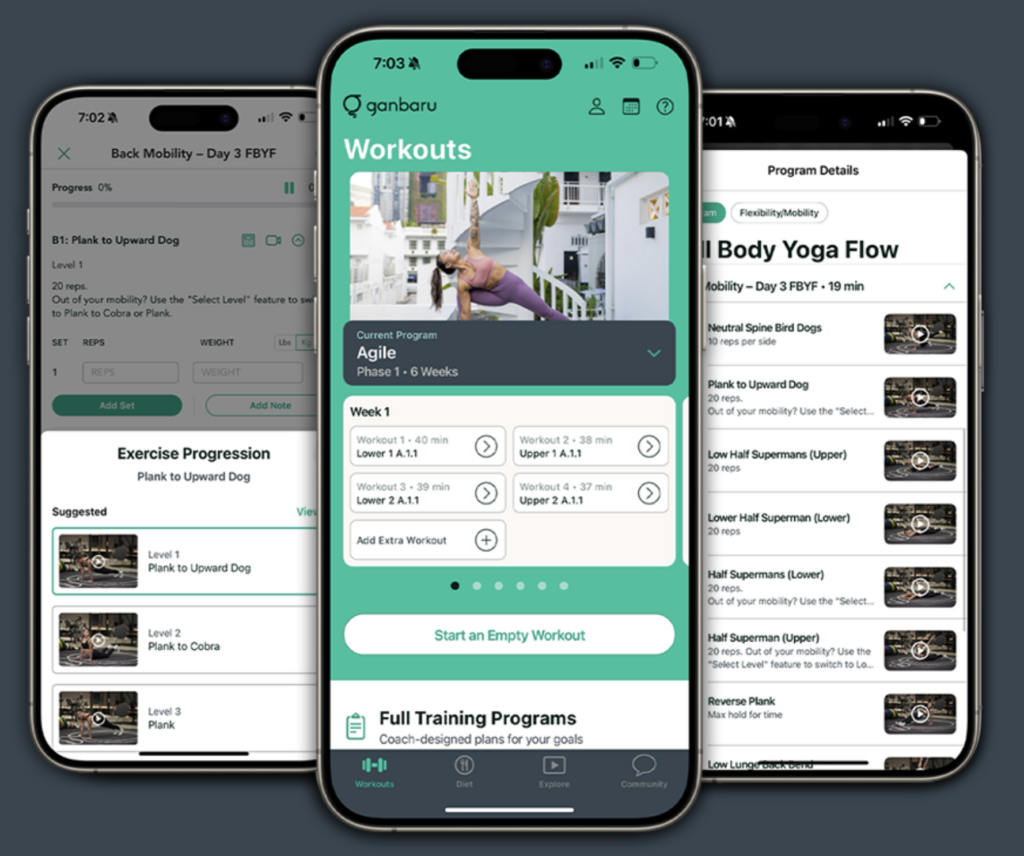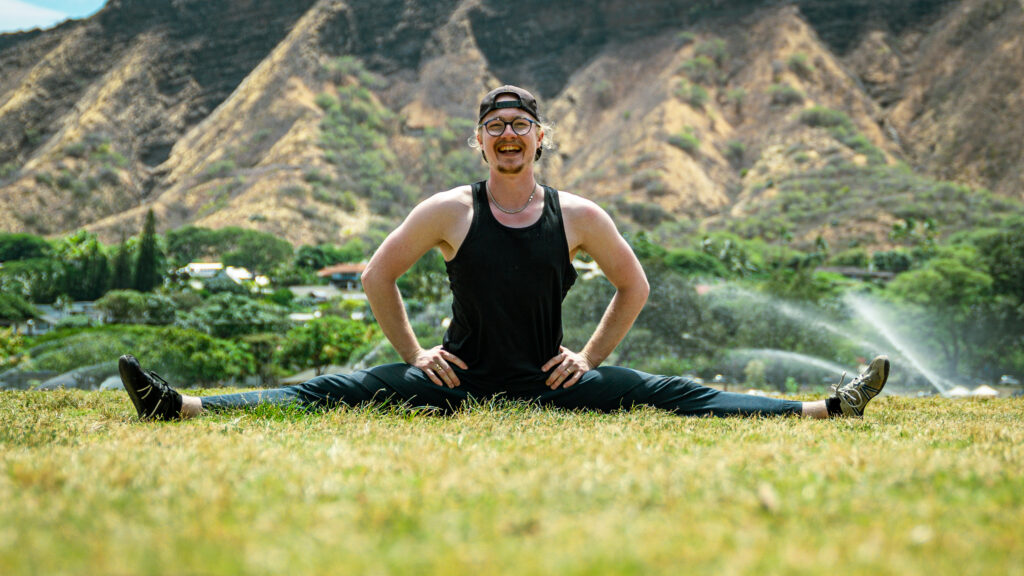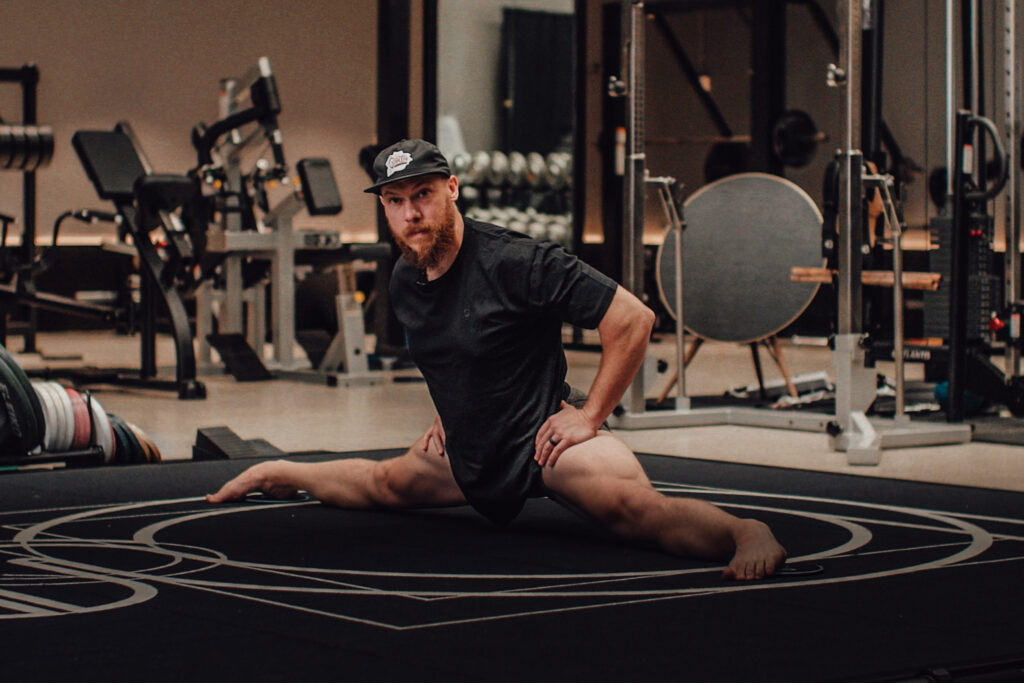
Building muscle and getting stronger isn’t rocket science. You train hard, eat well, and rest sufficiently, and you’ll see changes. But there are ways to make it more efficient. In this case, we’re focusing on training legs for increased strength and size.
In this video, Ganbaru founder and coach Eugene Teo shared 10 things he wished he knew earlier for stronger, bigger legs.
1. Try learning back for leg extensions

Leaning back on a leg extension puts your quads in a more stretched position, providing you with a stronger and more effective training position. (Read more: stretch mediated hypertrophy and length tension relationship.) Eugene says many people are 20-30% weaker in this variation, which means you can build yourself to be exposed to more tension to stimulate more gains.
Key: The goal is to open the hip, not to lean all the way back. Play around and see what’s the most comfortable!
2. Explore different loading options for single-leg movements


Unilateral or single-leg movements are often thought to improve imbalances and balance. However, it’s better used to provide for different rotation through the hips.
- Contralateral loading (weight on non-working side): pulls body and pelvis towards working leg, challenges hip mobility over time
- Ipsilateral loading (weight on working side): opposite rotational force, easier to push from bottom position
Key: You don’t have to choose one or the other, but explore both to see what you’re missing.
3. Lean forward on leg curls

The seated leg curl is a great hamstring exercise as its stability allows you to push the weight and challenge yourself. You can further improve the exercise by deepening the hamstring stretch at the beginning of the exercise.
Key: In your starting position, lean forward and pull your chest up. This helps to straighten your back, tilt your pelvis, and lengthen the back of your legs.
4. Use straps for front squats

Front squats allow most people to get into a more comfortable squat due to the loading. But wrist and shoulder mobility is often a limiting factor in front squats. If that’s something you’re struggling with, try doing front squats with straps!
Bonus: You can also get the same help with zercher squats, although placing the on your elbow ditches may take some time to get used to.
5. Train your calves or hamstrings first

Most of the time, we focus on training big compound movements first. While there’s no problem with that, only training in this pattern can leave the same, smaller body parts more neglected.
Training calves and hamstrings first will not tire you out to the point of poor execution of larger compound movements, and it can even improve your mobility. Mainly, you are targeting more neglected muscles.
6. Feel free to elevate your heels


Using wedges on squats isn’t cheating. It isn’t always poor mobility either. While some people may be unable to squat fully due to ankle, knee, or hip mobility limitations, many people don’t have the bone structure to squat comfortably with their feet flat on the floor.
People with shorter femurs (thigh bone) and longer torsos often have a more upright squat. Elevating the heels for people with longer femurs can help balance things out more.
7. Do explosive jumps before squatting

If your regular working weight feels oddly heavy, you can try explosive jumps before your workout. By putting in 100% effort in explosive jumps, your legs will feel more ready to pick up that weight again. (Read more: post activation potentiation.)
Key: Rather than thinking of muscle activation as an on and off switch, it’s more similar to a dimmer switch. This means your body only recruits all muscle fibres when it deems necessary.
8. Train your adductors

Your inner thighs work to pull your legs from wide to narrow stance and are a prime hip extensor muscle during the bottom of a squat.
If seated adductor machine work feels too fluffy, try doing wider stance exercises such as cossack squats or sumo deadlifts. Adding seated adductions and Copenhagen planks are also great. Key: There is a huge opportunity for leg gains with the size, strength, and function of your adductors.
9. Hold the stretched position for 3 seconds

If you don’t enjoy stretching, make use of exercises that already put you in a stretched position. Think RDLs (hamstring and hips), calf raises (calves and ankles), and weighted pigeons or good mornings (hips). By holding each stretched position for 3 seconds, you easily add in a lot more mobility work.
10. You don’t have to do squats

Squatting is an important movement pattern, but you are not limited to barbell squats. Explore hack squats, goblet squats, and other options that you enjoy more.
The takeaway
If you want to incorporate these tips but don’t know where to begin, explore Ganbaru Method’s 7-day free trial that gives you complete app access.
Watch the full video here:














